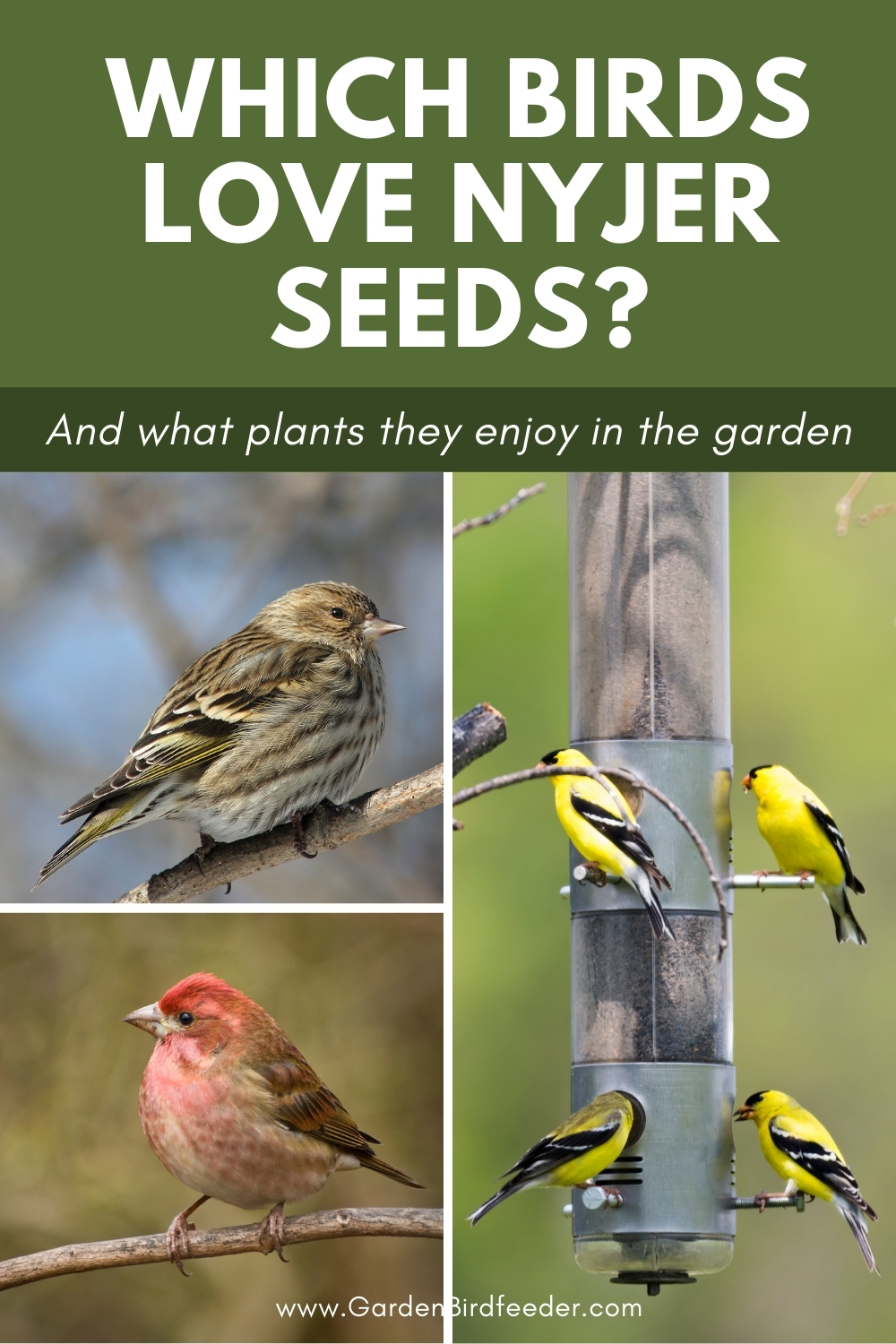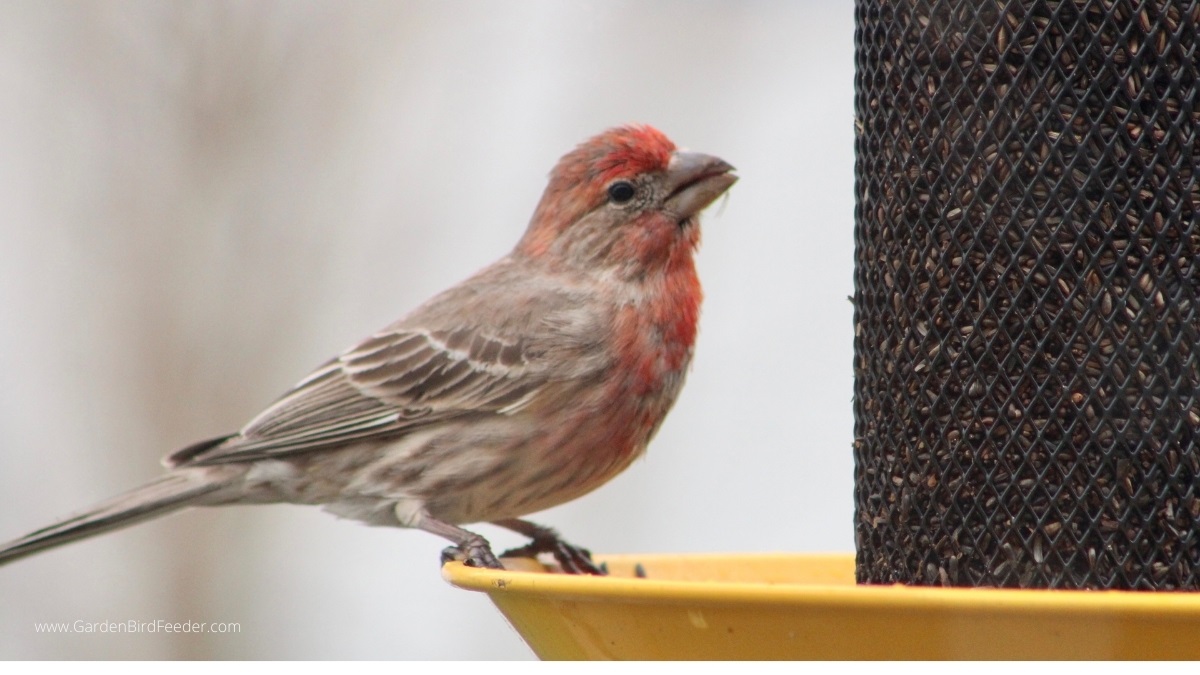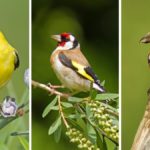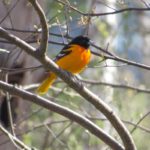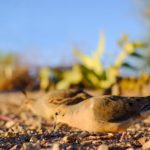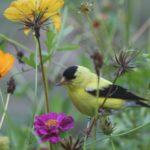Nyjer or Thistle seed is a popular food for finches or sparrows and can be offered year-round. But did you know many other birds enjoy this type of birdseed?
This article will show how to identify the birds that may visit your bird feeder when you fill it with Nyjer seed. We’ll also take a look at their eating habits, regional habitat, and the plants they love so that you can attract more of your favorites to your backyard.
But before we go into the list of birds, let’s clear up a few points of confusion about Nyjer and thistle seed for birds.
What is Nyjer Bird Seed?
Nyjer is a highly nutritious and popular wild bird food with a long, spiky seed. It is one of the more popular seed mixes used by backyard birders and can be found at almost any garden center, either by itself or in a birdseed mix.
Nyjer bird seed has many names or spellings. It is also known as thistle seed, niger seed, nyger seed, niger, Nyjer, or oil-seed-thistle.
What Do Nyjer Seeds Actually Look Like?
Nyjer seeds are black and resemble tiny grains of rice. They are dark brown or black with white tips.
The seeds are thin, but they are packed with nutrition. The seeds have a high oil content and provide a good energy source for the birds.
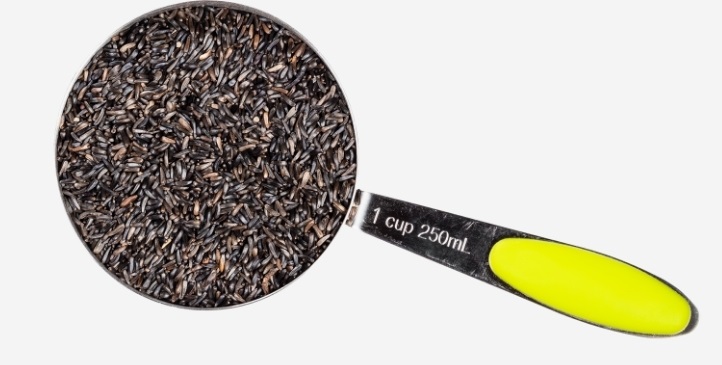
Are Nyjer And Thistle Seed The Same?
Nyjer seeds are sometimes called thistle seeds, but they are not the same thing and do not come from the Thistle plant. Nyjer seeds are harvested from the Guizotia flower of the Niger plant (Guizotia abyssinica), which is a sturdy, upstanding annual herb with bright yellow flowers. The plants are native to Ethiopia and India.
Thistle, by comparison, is a flowering plant found in many North American backyards.
Early in the marketing effort of the birdseed, retailers referred to niger seed as thistle seed since the finches also love to feed on the seeds of the thistle plant.
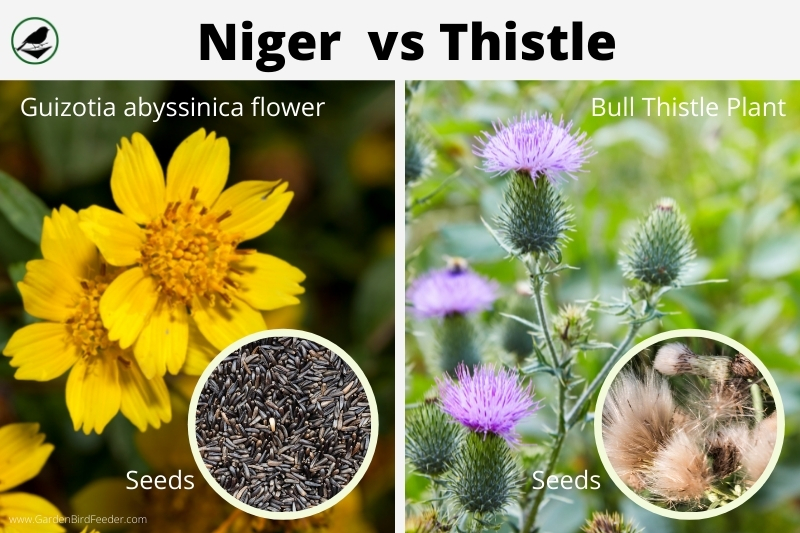
Which Birds Eat Thistle or Nyjer Bird Seed?
Seven birds that eat Nyjer birdseed, how to identify them, and what they eat in their natural habitat (or your garden).
1. The American Goldfinch (Carduelis tristis)
The first bird many of us think about when putting out a niger bird feeder is the goldfinch. In fact, you will see their photo prominently featured on almost every Nyger birdseed package.
How to Identify Goldfinches
The males of the species have bright yellow plumage with black accents on their heads and wings. The female goldfinch has a duller yellow color with the same black and white wing markings. However, the crown of the female goldfinch is all yellow.
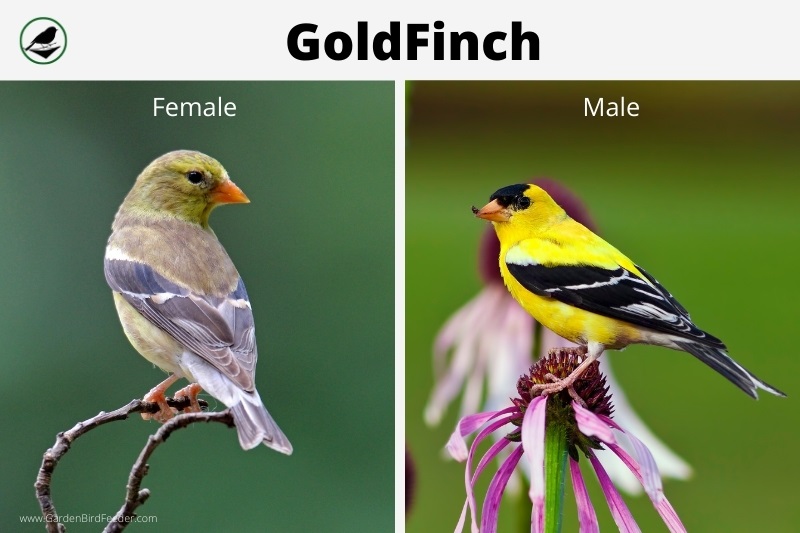
These pretty yellow songbirds are found throughout the United States and southern Canada.
What Does the Goldfinch They Eat In the Garden?
The American Goldfinch loves feeding on the Bull Thistle plant, which can produce up to 300 seeds per flowerhead. They will also eat the seeds from many different plants, flowers, and weeds. I have watched the goldfinches in my own yard, feeding on Cosmos, Zinnias, and Coneflowers.
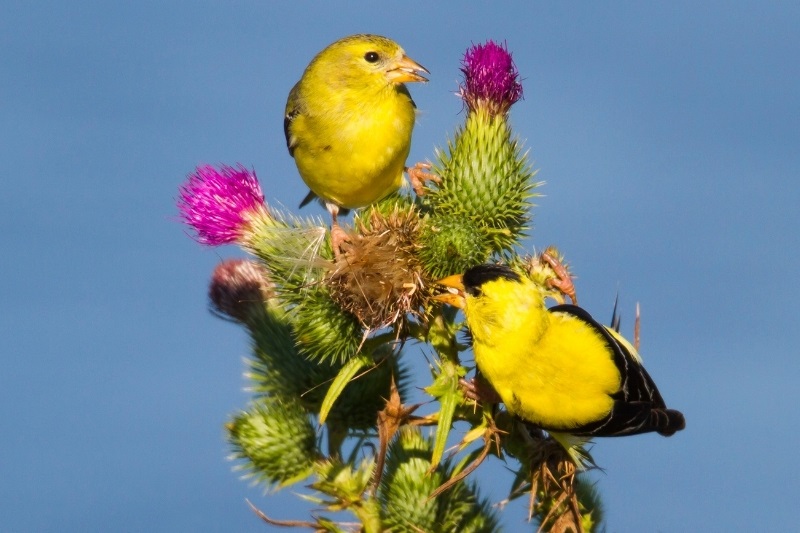
2. The Purple Finch
The purple finch will eat many types of birdseed at the feeder, including Nyjer, milo, safflower, and sunflower seeds. While they will also eat millet, oats, or corn, they prefer seeds at the thistle feeder.
How to Identify the Purple Finch
These birds have various colors in their plumage, including light browns, grays, reds, and purples. The males are typically more brightly colored than the females with a dark raspberry-colored head, breast, and back. The female has deeply striped brown or grey feathers. Both have a whitish steaked eyebrow marking that arches from the back corner of their eyes to their neck.
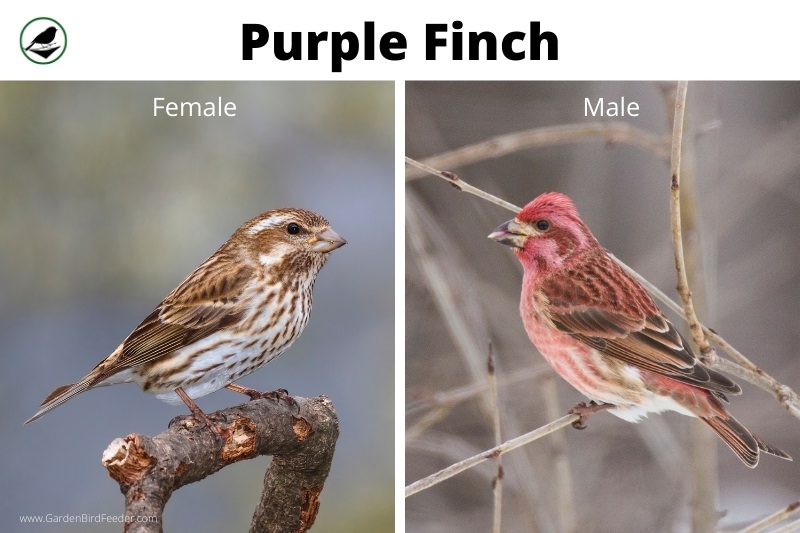
They are commonly found in wooded areas throughout the United States and Canada.
What Does the Purple Finch Eat In the Garden?
The purple finch consumes fruit, berries, and tree seeds. These may include blackberry, cherry, plum, and crabapple tree seeds. They also hunt for insects, grubs, and caterpillars in the warmer months. Even when other food is available, they will visit your bird feeders and enjoy Nyjer birdseed like many other finches.
Learn new ways to attract more finches to your yard.
3. The House Finch
These small birds are another common visitor to your feeder. They eat Nyjer or thistle birdseed. The house finch also enjoys black oil sunflower seeds, safflower, and millet.
How to Identify the House Finch
The size and shape of the house finch are similar to the sparrow, with a pale brownish-gray body. Male house finches will have a reddish head and breast. The streaking is more muted when compared to the purple finch, and there is no arched eyebrow.
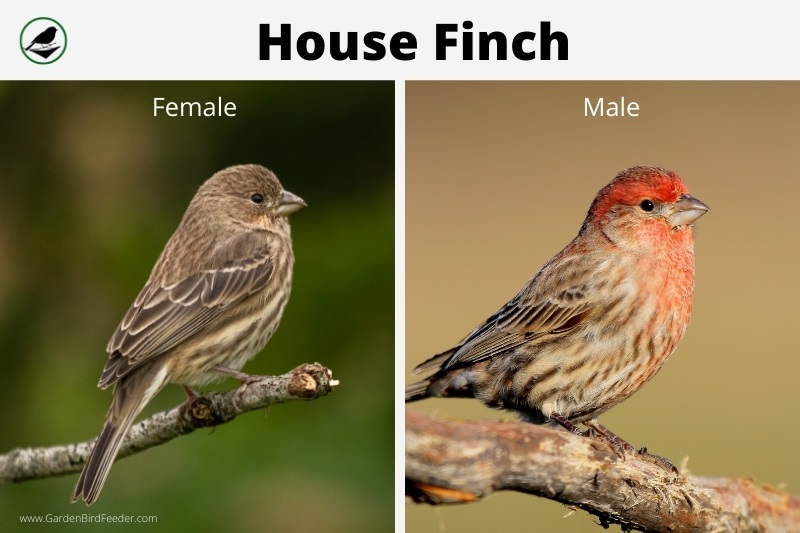
They are found in many habitats throughout North America, including wooded areas, suburbs, marshes, and coastal wetlands. The house finches territory extends from the southern states into most of Mexico.
What Does The House Finch Eat In the Garden?
In the wild, house finches eat mustard seeds, cactus, poison oak, and knotweed, as well as popular fruit seeds and berries such as blackberry, raspberry, and grape seeds. On nearby farms, they eat canola seeds and thistle. The thistle seed they eat is known as bull thistle seed.
Love Finches? Don’t Miss This Article: The 8 Best Bird Feeders for Finches
4. Pine Siskins (Spinus pinus)
Pine siskins will eat Nyjer, milo, safflower, sunflower, and black oil sunflower seeds at the birdfeeder.
The pine siskin is a nomadic bird, so you may not see it at your feeder every year. Instead of staying in one area, it migrates to the location where seed crops are most abundant. Its regional habitat is found in Canada, the United States, and Mexico.
How to Identify Pine Siskins
The bill on these finches is thinner, more pointed, and slightly curved down. This identifying characteristic helps extract seeds from pinecones.
They have short, thickish brown feathers with a bold white streaking on their bellies. Their brown wings have noticeable yellow streaks that arch back to their tail feathers. The males have a browner back with more pronounced white and dark streaks on their bellies.
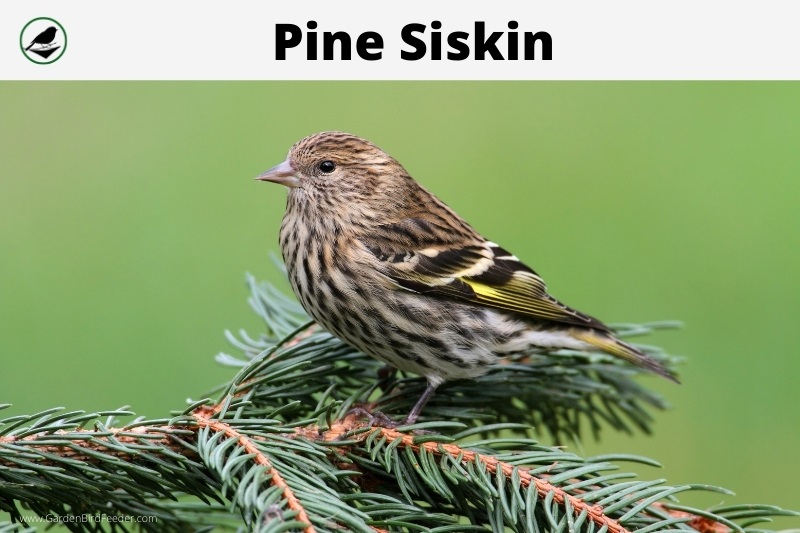
What Does The Pine Siskin Eat In the Garden?
The siskins prefer coniferous tree seeds such as Hemlock, Red Spruce, and Pine trees in the wild. But they also feed deciduous tree seeds, weeds, and the occasional small insects. You may find the siskin hanging upside down while searching for seeds, making them natural for the sock-style nyjer seed feeder.
5 . Mourning Doves (Zenaida macroura)
Mourning Doves eat a wide range of seeds offered at your backyard bird feeder. They feed on black oil sunflower seeds, millet, safflower, Nyjer or thistle, and many other popular seeds from birdseed mixes.
How to Identify Morning Doves
The mourning dove is a relatively small dove, at 8 inches long, known for its cooing, mournful call. The feathers are mostly gray or light beige with light bluish coloring around their eyes. They have dark beaks and red or orange-colored feet. The plumage of the mourning dove has an iridescent quality that is more prominent in the male species.
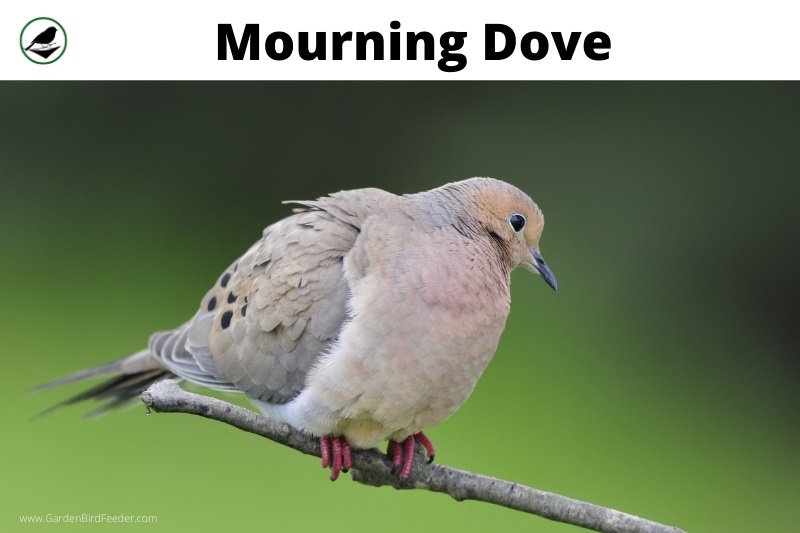
Mourning Doves are found throughout the United States and Mexico, typically inhabiting woodlands or meadows near open areas.
What Do Mourning Doves Eat In the Garden?
The mourning dove is a ground feeder that can be seen on lawns, farmlands, roadsides, and other open areas. Their daily diet includes a variety of weed, grass, and cereal grains. Mourning doves help control weeds in the garden by eating many weed seeds before they can take root in your flower beds.
Read more about the mourning dove’s diet and feeding behaviors.
6. The Common Red Polls (Acanthis flammea)
The redpoll is a very popular bird that eats thistle seed at your garden bird feeder.
How to Identify the Redpoll
The redpoll has reddish-brown plumage with black streaks on its head, back, wings, and tail. The male has a more distinct red coloring on the head and breast. The female has just a small touch of red at the crown with a brown spotted breast.
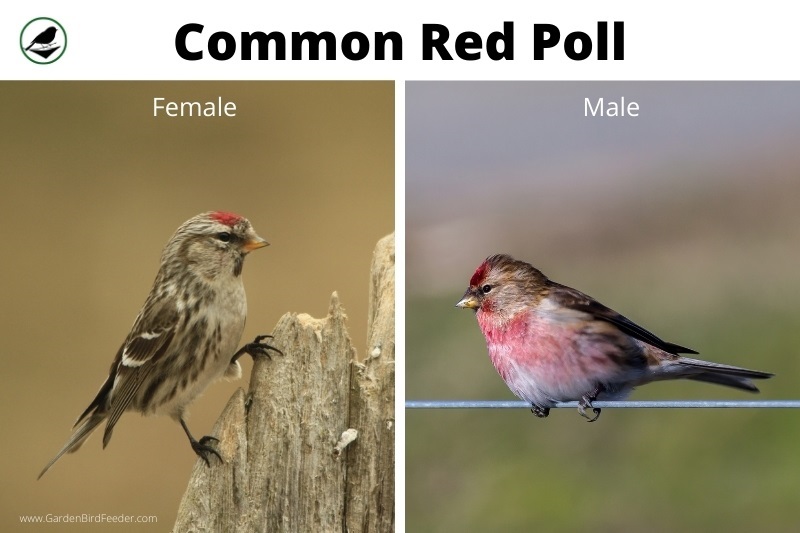
What Do Red Polls Eat In the Garden?
The redpoll dines on smaller tree seeds such as birch, willow, spruce, and pines. They also favor plant seeds from wildflowers, mustards, or grasses. These birds will eat insects and spiders, especially during breeding season when they feed them to their young.
7. Dark-eyed Junco (Junco hyemalis)
The junco is a frequent visitor at our backyard birdfeeders. They love millet and nyjer seeds and can most often be found on the ground underneath the feeder.
How to Identify the Junco
The junco comes in a variety of colors, depending on its location. In the Eastern states, juncos are primarily grey and white. The western states have a more varied plumage that may range from reddish-brown to pink or rust accents. All juncos have light-colored beaks, a round head, and a white outer tail.
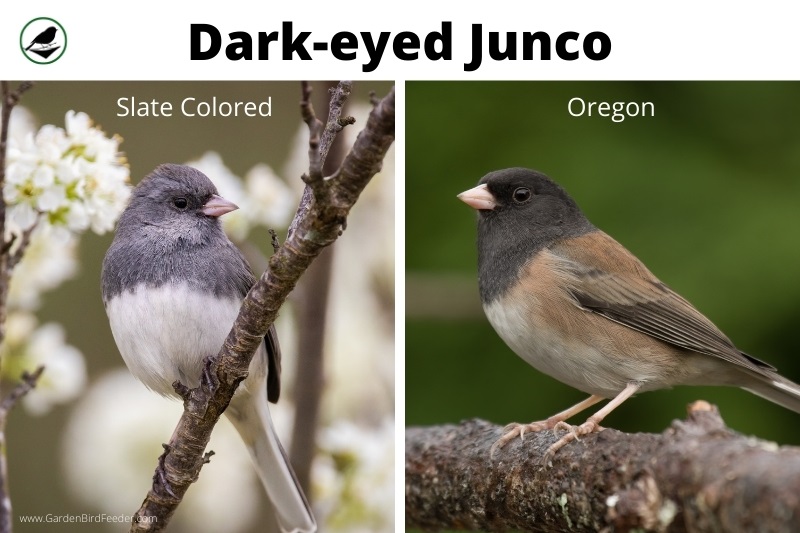
The dark-eyed junco is found throughout North America in the United States, Canada, and Mexico. They prefer forested areas for breeding but will forage for food along the edges of wooded areas and suburban yards.
What Do Juncos Eat In the Garden?
The junco feeds on a variety of small seeds, including wildflowers, weedy grasses, and cereal grains. In the warmer months, half of their diet comes from insects, beetles, and spiders. Juncos will search for food on the ground digging through leaf litter and earthworms.
Garden-Inspired Birding Tees
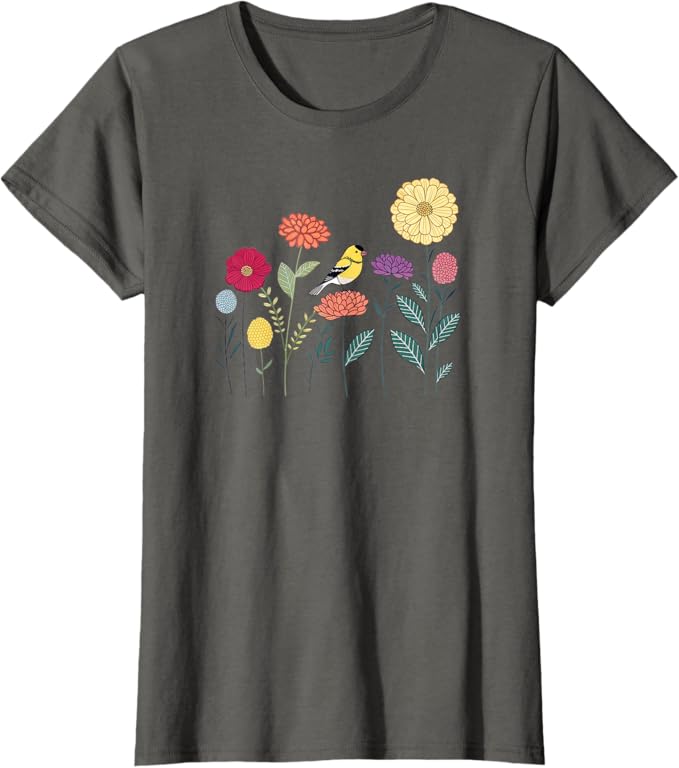
Discover the cutest bird—and garden-themed t-shirts. Our latest designs are available on Amazon at Garden Bird Lover Tees.
One of our favorites is the Goldfinch in the Zinnia Flower Garden T-Shirt. Check it out today!
What Birds Don’t Like Nyjer?
Birds that prefer nectar or fruit such as Orioles, waxwings, hummingbirds will not be interested in Nyjer seeds.
The seeds’ tiny size is also a problem for birds with larger bills, such as cardinals, bluejays, or starlings.
Feeding Nyjer or Thistle Seed To Birds – Tips from Experts
It may take a little time for your birds to get used to a new feeder or bird food. Use these tips when introducing nyjer seed in your bird feeders.
How To Introduce Feeders With Nyjer Bird Seed
- Fill existing feeders with a birdseed blend that includes nyjer seed to introduce it to your backyard birds.
- Keep one corner of the yard separate for only the Niger seed feeders. Small birds may be intimidated by the larger birds that flock to your other bird feeders.
- Place the feeders near bushes or shrubs. This helps the birds feel safe and gives them plenty of places to perch while they are waiting for their turn at the feeder.
- Add new feeders in the winter months when there is not an abundance of food available in the garden.
- Experiment with different styles of feeders to see which works best. Use both a sock-style mesh feeder and a platform feeder to attract the different species of birds.
- Sprinkle some seed around the bottom of the feeder to attract the ground-feeding birds like doves and juncos.
Can I Put Thistle Seed In A Regular Bird Feeder?
Thistle seed is best used in mesh or sock bird feeders. You can also use bird feeders with smaller feeding ports that will hold the seed in the bird feeder without spilling.
How Long Does Nyjer Seed Last?
Nyjer seed will stay fresh for up to a year when properly stored. Environmental factors will affect the length of time your seed stays fresh. Due to the small size, it is prone to dry out or become moldy. Keep your birdseed in a dark, dry location in a sealed container. Always check for signs of mildew or mold before using.
When refilling the bird feeder, inspect any remaining seed before adding new seed on top. Uneaten birdseed left in a feeder for longer periods of time (more than a few weeks) can develop mildew, especially in hot, wetter climates.
In Summary
One of the most common sources of bird seed sold is thistle seed (Nyjer), which is a great way to attract and keep songbirds in your backyard. Nyjer bird feeders can be added to your garden to encourage these birds to visit your yard and make a home nearby.
By adding the plants that the birds in our list above you will be able to encourage them to visit often and build their nest nearby.
Like it? Pin It!
